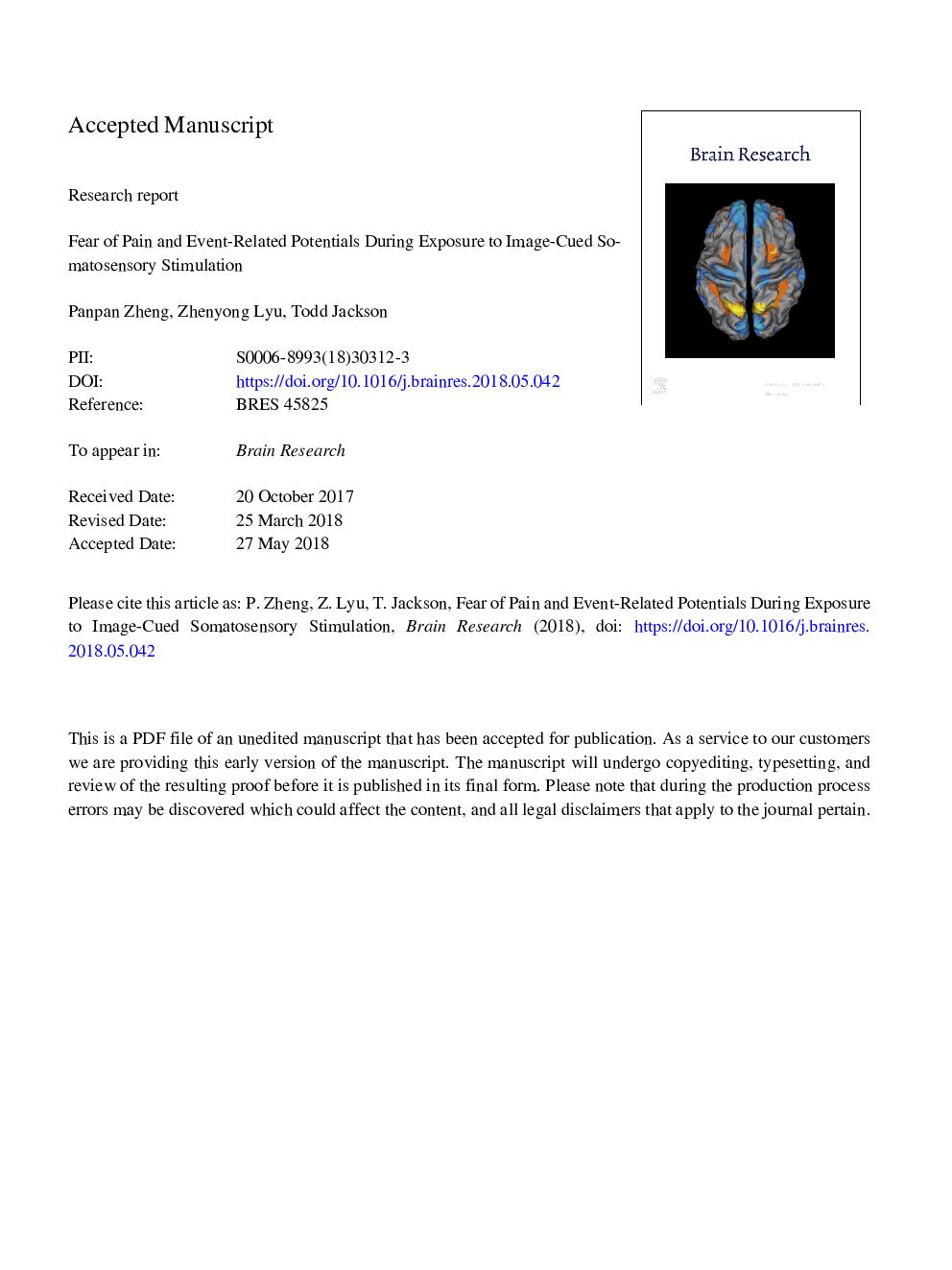| Article ID | Journal | Published Year | Pages | File Type |
|---|---|---|---|---|
| 8839693 | Brain Research | 2018 | 35 Pages |
Abstract
Numerous behavior studies have assessed links of pain-related fear with biases in attention towards pain stimuli but considerably less is known about neural processes underlying such biases. To address this gap, event-related potentials (ERPs) were examined as 39 high pain-fearful (Hi-FOP) and 36 low pain-fearful (Lo-FOP) adults (1) viewed non-painful versus painful images and (2) subsequently received non-painful versus possibly painful somatosensory stimulation, respectively. The Hi-FOP group judged both non-painful and painful somatosensory stimulation to be more intense than Lo-FOP group members did. Hi-FOP group members also displayed smaller N1 amplitudes than Lo-FOP group members did during image presentations, regardless of image type. Finally, Lo-FOP group members exhibited larger P3 amplitudes when processing potentially painful somatosensory stimulation compared to non-painful stimulation while no such difference was observed in Hi-FOP group members. Overall results suggested that the pain-fearful tended to exaggerate the subjective intensity of potentially painful somatosensory stimuli but allocated comparatively fewer cognitive resources to processing such stimulation; arguably, this pattern perpetuates high fear of pain levels.
Related Topics
Life Sciences
Neuroscience
Neuroscience (General)
Authors
Panpan Zheng, Zhenyong Lyu, Todd Jackson,
